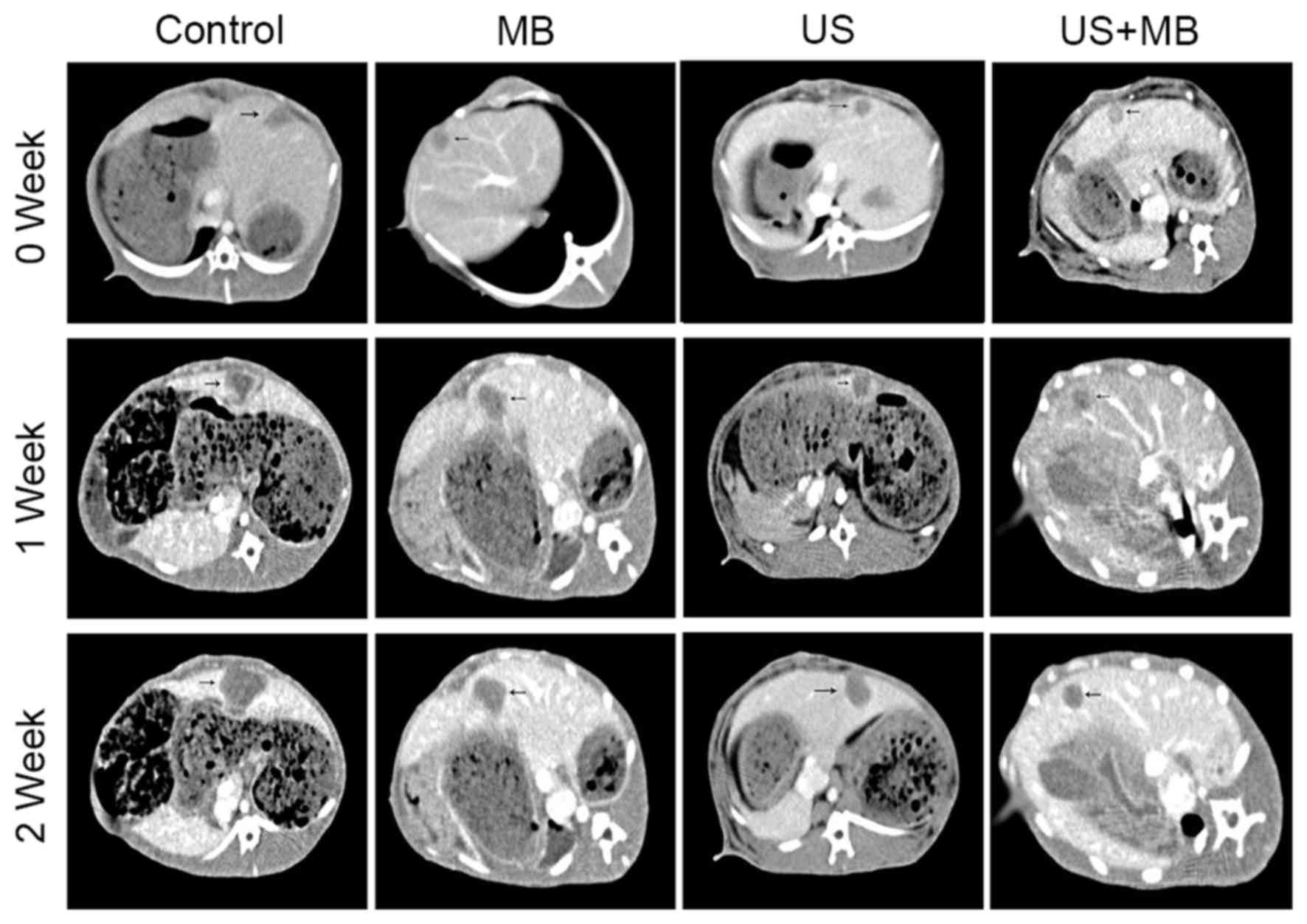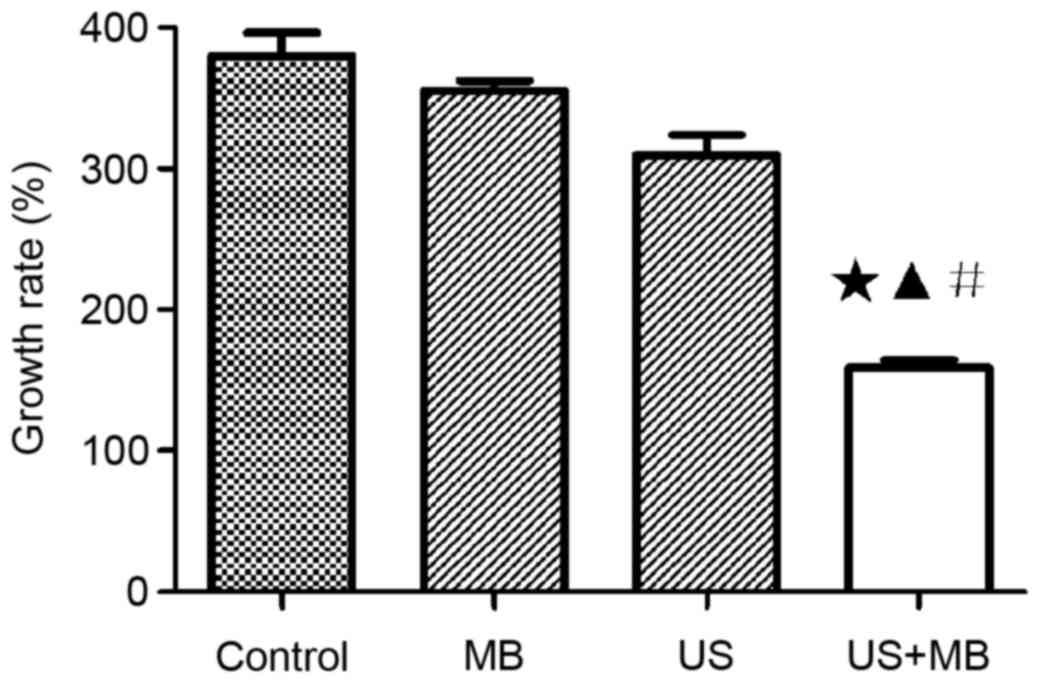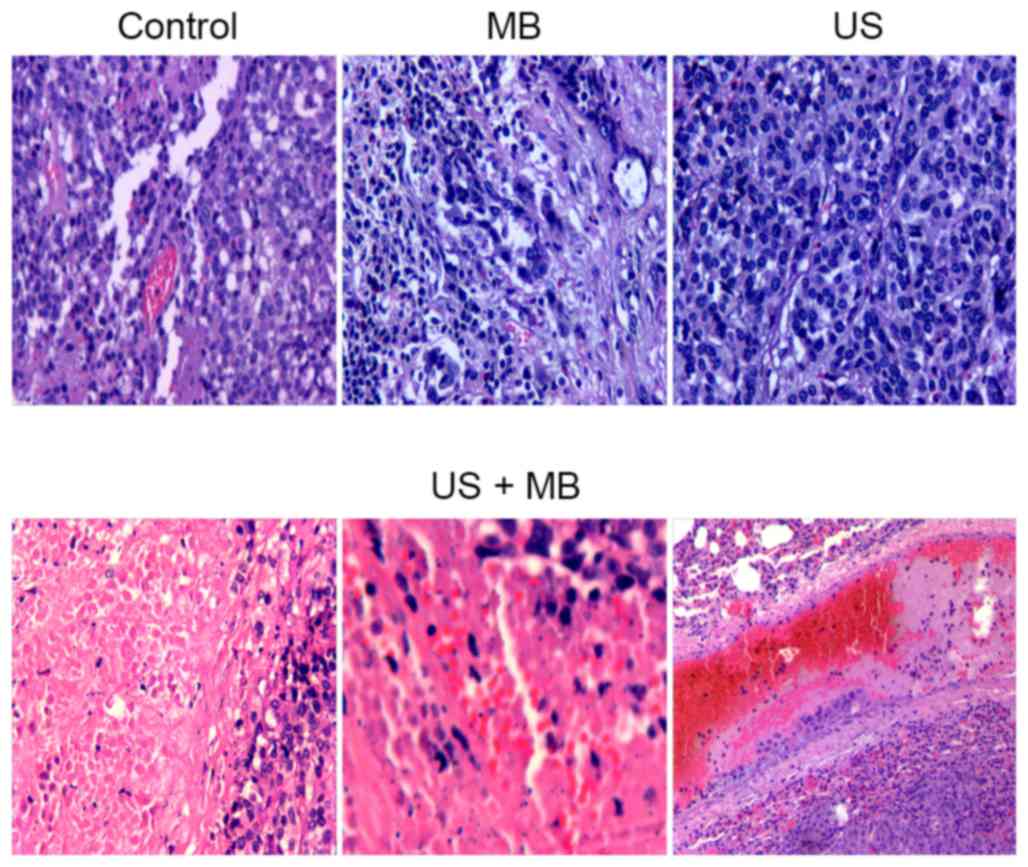|
1
|
Fausti SA, Erickson DA, Frey RH, Rappaport
BZ and Schechter MA: The effects of noise upon human hearing
sensitivity from 8000 to 20 000 Hz. J Acoust Soc Am. 69:1343–1347.
1981. View
Article : Google Scholar : PubMed/NCBI
|
|
2
|
Miano AC, Ibarz A and Augusto PE:
Mechanisms for improving mass transfer in food with ultrasound
technology: Describing the phenomena in two model cases. Ultrason
Sonochem. 29:413–419. 2016. View Article : Google Scholar : PubMed/NCBI
|
|
3
|
Porova N, Botvinnikova V, Krasulya O,
Cherepanov P and Potoroko I: Effect of ultrasonic treatment on
heavy metal decontamination in milk. Ultrason Sonochem.
21:2107–2111. 2014. View Article : Google Scholar : PubMed/NCBI
|
|
4
|
Gao S, Hemar Y, Lewis GD and Ashokkumar M:
Inactivation of enterobacter aerogenes in reconstituted skim milk
by high- and low-frequency ultrasound. Ultrason Sonochem.
21:2099–2106. 2014. View Article : Google Scholar : PubMed/NCBI
|
|
5
|
Zisu B, Bhaskaracharya R, Kentish S and
Ashokkumar M: Ultrasonic processing of dairy systems in large scale
reactors. Ultrason Sonochem. 17:1075–1081. 2010. View Article : Google Scholar : PubMed/NCBI
|
|
6
|
Hapeshi E, Achilleos A, Papaioannou A,
Valanidou L, Xekoukoulotakis NP, Mantzavinos D and Fatta-Kassinos
D: Sonochemical degradation of ofloxacin in aqueous solutions.
Water Sci Technol. 61:3141–3146. 2010. View Article : Google Scholar : PubMed/NCBI
|
|
7
|
Pangu GD, Davis KP, Bates FS and Hammer
DA: Ultrasonically induced release from nanosized polymer vesicles.
Macromol Biosci. 10:546–554. 2010. View Article : Google Scholar : PubMed/NCBI
|
|
8
|
Fu H, Comer J, Cai W, Cai W and Chipot C:
Sonoporation at small and large length scales: Effect of cavitation
bubble collapse on membranes. J Phys Chem Lett. 6:413–418. 2015.
View Article : Google Scholar : PubMed/NCBI
|
|
9
|
Sirsi SR and Borden MA: State-of-the-art
materials for ultrasound-triggered drug delivery. Adv Drug Deliv
Rev. 72:3–14. 2014. View Article : Google Scholar : PubMed/NCBI
|
|
10
|
Forbes MM, Steinberg RL and O'Brien WD Jr:
Frequency-dependent evaluation of the role of definity in producing
sonoporation of Chinese hamster ovary cells. J Ultrasound Med.
30:61–69. 2011. View Article : Google Scholar : PubMed/NCBI
|
|
11
|
Aldwaikat M and Alarjah M: Investigating
the sonophoresis effect on the permeation of diclofenac sodium
using 3D skin equivalent. Ultrason Sonochem. 22:580–587. 2015.
View Article : Google Scholar : PubMed/NCBI
|
|
12
|
Ohl CD, Arora M, Ikink R, de Jong N,
Versluis M, Delius M and Lohse D: Sonoporation from jetting
cavitation bubbles. Biophys J. 91:4285–4295. 2006. View Article : Google Scholar : PubMed/NCBI
|
|
13
|
Ward M, Wu J and Chiu JF:
Ultrasound-induced cell lysis and sonoporation enhanced by contrast
agents. J Acoust Soc Am. 105:2951–2957. 1999. View Article : Google Scholar : PubMed/NCBI
|
|
14
|
Domenici F, Giliberti C, Bedini A, Palomba
R, Luongo F, Sennato S, Olmati C, Pozzi D, Morrone S, Congiu
Castellano A and Bordi F: Ultrasound well below the intensity
threshold of cavitation can promote efficient uptake of small drug
model molecules in fibroblast cells. Drug Deliv. 20:285–295. 2013.
View Article : Google Scholar : PubMed/NCBI
|
|
15
|
Florinas S, Kim J, Nam K, Janát-Amsbury MM
and Kim SW: Ultrasound-assisted siRNA delivery via arginine-grafted
bioreducible polymer and microbubbles targeting VEGF for ovarian
cancer treatment. J Control Release. 183:1–8. 2014. View Article : Google Scholar : PubMed/NCBI
|
|
16
|
Javadi M, Pitt WG, Tracy CM, Barrow JR,
Willardson BM, Hartley JM and Tsosie NH: Ultrasonic gene and drug
delivery using eLiposomes. J Control Release. 167:92–100. 2013.
View Article : Google Scholar : PubMed/NCBI
|
|
17
|
Miller DL, Pislaru SV and Greenleaf JE:
Sonoporation: Mechanical DNA delivery by ultrasonic cavitation.
Somat Cell Mol Genet. 27:115–134. 2002. View Article : Google Scholar : PubMed/NCBI
|
|
18
|
Dobroserdov VK: On the effect of low
frequency ultrasonic waves and high frequency sound waves on the
organism of workers. Gig Sanit. 32:17–21. 1967.(In Russian).
PubMed/NCBI
|
|
19
|
Davis H, Parrack HO and Eldredge DH:
Hazards of intense sound and ultrasound. Ann Otol Rhinol Laryngol.
58:732–738. 1949. View Article : Google Scholar : PubMed/NCBI
|
|
20
|
Acton WI and Carson MB: Auditory and
subjective effects of airborne noise from industrial ultrasonic
sources. Br J Ind Med. 24:297–304. 1967.PubMed/NCBI
|
|
21
|
Acton WI: The effects of industrial
airborne ultrasound on humans. Ultrasonics. 12:124–128. 1974.
View Article : Google Scholar : PubMed/NCBI
|
|
22
|
Boucaud A, Montharu J, Machet L, Arbeille
B, Machet MC, Patat F and Vaillant L: Clinical, histologic and
electron microscopy study of skin exposed to low-frequency
ultrasound. Anat Rec. 264:114–119. 2001. View Article : Google Scholar : PubMed/NCBI
|
|
23
|
Tang H, Wang CC, Blankschtein D and Langer
R: An investigation of the role of cavitation in low-frequency
ultrasound-mediated transdermal drug transport. Pharm Res.
19:1160–1169. 2002. View Article : Google Scholar : PubMed/NCBI
|
|
24
|
Mawson R, Rout M, Ripoll G, Swiergon P,
Singh T, Knoerzer K and Juliano P: Production of particulates from
transducer erosion: Implications on food safety. Ultrason Sonochem.
21:2122–2130. 2014. View Article : Google Scholar : PubMed/NCBI
|
|
25
|
Shen ZY, Shen E, Zhang JZ, Bai WK, Wang Y,
Yang SL, Nan SL, Lin YD, Li Y and Hu B: Effects of low-frequency
ultrasound and microbubbles on angiogenesis-associated proteins in
subcutaneous tumors of nude mice. Oncol Rep. 30:842–850.
2013.PubMed/NCBI
|
|
26
|
Shen ZY, Shen E, Diao XH, Bai WK, Zeng MX,
Luan YY, Nan SL, Lin YD, Wei C, Chen L, et al: Inhibitory effects
of subcutaneous tumors in nude mice mediated by low-frequency
ultrasound and microbubbles. Oncol Lett. 7:1385–1390.
2014.PubMed/NCBI
|
|
27
|
Ferrara KW: Driving delivery vehicles with
ultrasound. Adv Drug Deliv Rev. 60:1097–1102. 2008. View Article : Google Scholar : PubMed/NCBI
|
|
28
|
Shen ZY, Xia GL, Wu MF, Ji LY and Li YJ:
The effects of percutaneous ethanol injection followed by 20-kHz
ultrasound and microbubbles on rabbit hepatic tumors. J Cancer Res
Clin Oncol. 142:373–378. 2016. View Article : Google Scholar : PubMed/NCBI
|
|
29
|
Chen G, Ma DQ, He W, Zhang BF and Zhao LQ:
Computed tomography perfusion in evaluating the therapeutic effect
of transarterial chemoembolization for hepatocellular carcinoma.
World J Gastroenterol. 14:5738–5743. 2008. View Article : Google Scholar : PubMed/NCBI
|
|
30
|
Ohl SW, Klaseboer E and Khoo BC: Bubbles
with shock waves and ultrasound: A review. Interface Focus.
5:201500192015. View Article : Google Scholar : PubMed/NCBI
|
|
31
|
Izadifar Z, Babyn P and Chapman D:
Mechanical and biological effects of ultrasound: A review of
present knowledge. Ultrasound Med Biol. 43:1085–1104. 2017.
View Article : Google Scholar : PubMed/NCBI
|
|
32
|
Vlaisavljevich E, Lin KW, Warnez MT, Singh
R, Mancia L, Putnam AJ, Johnsen E, Cain C and Xu Z: Effects of
tissue stiffness, ultrasound frequency and pressure on
histotripsy-induced cavitation bubble behavior. Phys Med Biol.
60:2271–2292. 2015. View Article : Google Scholar : PubMed/NCBI
|
|
33
|
Husseini GA, Abdel-Jabbar NM, Mjalli FS
and Pitt WG: Modeling and sensitivity analysis of acoustic release
of doxorubicin from unstabilized pluronic P105 using an artificial
neural network model. Technol Cancer Res Treat. 6:49–56. 2007.
View Article : Google Scholar : PubMed/NCBI
|
|
34
|
Shneidman VA: Time-dependent cavitation in
a viscous fluid. Phys Rev E. 94:0621012016. View Article : Google Scholar : PubMed/NCBI
|
|
35
|
Shen ZY, Xia GL, Wu MF, Shi MX, Qiang FL,
Shen E and Hu B: The effects of low-frequency ultrasound and
microbubbles on rabbit hepatic tumors. Exp Biol Med (Maywood).
239:747–757. 2014. View Article : Google Scholar : PubMed/NCBI
|
|
36
|
Verdelli C, Avagliano L, Creo P, Guarnieri
V, Scillitani A, Vicentini L, Steffano GB, Beretta E, Soldati L,
Costa E, et al: Tumour-associated fibroblasts contribute to
neoangiogenesis in human parathyroid neoplasia. Endocr Relat
Cancer. 22:87–98. 2015. View Article : Google Scholar : PubMed/NCBI
|
|
37
|
Skyba DM, Price RJ, Linka AZ, Skalak TC
and Kaul S: Direct in vivo visualization of intravascular
destruction of microbubbles by ultrasound and its local effects on
tissue. Circulation. 98:290–293. 1998. View Article : Google Scholar : PubMed/NCBI
|
|
38
|
Price RJ, Skyba DM, Kaul S and Skalak TC:
Delivery of colloidal particles and red blood cells to tissue
through microvessel ruptures created by targeted microbubble
destruction with ultrasound. Circulation. 98:1264–1267. 1998.
View Article : Google Scholar : PubMed/NCBI
|
|
39
|
Liu Y, Ren W, Liu C, Huang K, Feng Y, Wang
X and Tong Y: Contrast-enhanced ultrasonography of the rabbit VX2
tumor model: Analysis of vascular pathology. Oncol Lett. 4:685–690.
2012.PubMed/NCBI
|
|
40
|
Kollath A, Brezhneva N, Skorb EV and
Andreeva DV: Microbubbles trigger oscillation of crystal size in
solids. Phys Chem Chem Phys. 19:6286–6291. 2017. View Article : Google Scholar : PubMed/NCBI
|
|
41
|
Merouani S, Hamdaoui O, Rezgui Y and
Guemini M: Theoretical estimation of the temperature and pressure
within collapsing acoustical bubbles. Ultrason Sonochem. 21:53–59.
2014. View Article : Google Scholar : PubMed/NCBI
|
|
42
|
Coralic V and Colonius T: Shock-induced
collapse of a bubble inside a deformable vessel. Eur J Mech B
Fluids. 40:64–74. 2013. View Article : Google Scholar : PubMed/NCBI
|
|
43
|
Suzuki R, Oda Y, Utoguchi N and Maruyama
K: Progress in the development of ultrasound-mediated gene delivery
systems utilizing nano- and microbubbles. J Control Release.
149:36–41. 2011. View Article : Google Scholar : PubMed/NCBI
|
|
44
|
Lin CY, Tseng HC, Shiu HR, Wu MF, Chou CY
and Lin WL: Ultrasound sonication with microbubbles disrupts blood
vessels and enhances tumor treatments of anticancer nanodrug. Int J
Nanomedicine. 7:2143–2152. 2012. View Article : Google Scholar : PubMed/NCBI
|













